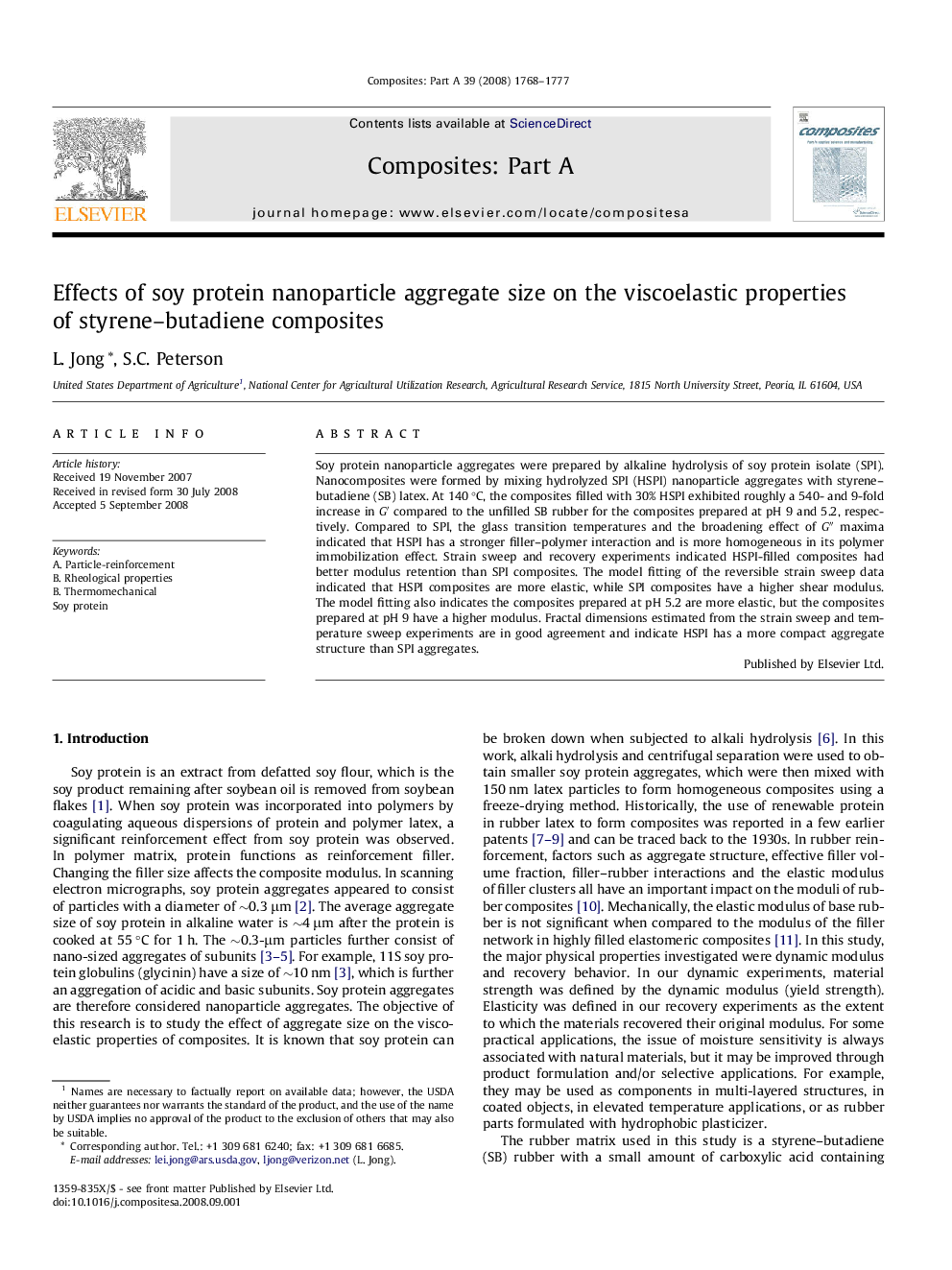| کد مقاله | کد نشریه | سال انتشار | مقاله انگلیسی | نسخه تمام متن |
|---|---|---|---|---|
| 1467503 | 990104 | 2008 | 10 صفحه PDF | دانلود رایگان |

Soy protein nanoparticle aggregates were prepared by alkaline hydrolysis of soy protein isolate (SPI). Nanocomposites were formed by mixing hydrolyzed SPI (HSPI) nanoparticle aggregates with styrene–butadiene (SB) latex. At 140 °C, the composites filled with 30% HSPI exhibited roughly a 540- and 9-fold increase in G′ compared to the unfilled SB rubber for the composites prepared at pH 9 and 5.2, respectively. Compared to SPI, the glass transition temperatures and the broadening effect of G″ maxima indicated that HSPI has a stronger filler–polymer interaction and is more homogeneous in its polymer immobilization effect. Strain sweep and recovery experiments indicated HSPI-filled composites had better modulus retention than SPI composites. The model fitting of the reversible strain sweep data indicated that HSPI composites are more elastic, while SPI composites have a higher shear modulus. The model fitting also indicates the composites prepared at pH 5.2 are more elastic, but the composites prepared at pH 9 have a higher modulus. Fractal dimensions estimated from the strain sweep and temperature sweep experiments are in good agreement and indicate HSPI has a more compact aggregate structure than SPI aggregates.
Journal: Composites Part A: Applied Science and Manufacturing - Volume 39, Issue 11, November 2008, Pages 1768–1777